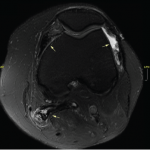Bone is a rich storehouse of growth factors, including activin A, TGF-beta, IGF-I and BMP-2, that not only have activity in bone as a part of normal remodeling but can impact other organs, including muscle. It is possible that during hyperactive bone resorption, as occurs in metastatic cancer, bone might have a predominant role over muscle in bone–muscle cross-talk and become a source of osteokines that affect muscle function. This has been demonstrated in a murine model of metastatic breast cancer that described a reduction in the strength of paw grip in the absence of tumor involvement of these muscles.5 Likewise, factors released from muscle, such as IGF-I, FGF-2, myostatin and IL-6, may play a critical role in bone metabolism that could further augment the role of bone in muscle dysfunction.
Can Weakness Cause Illness?
Is it possible for weakness to mediate disease rather than serve as its unwanted end result? The answer to this intriguing question may be at the heart of the pathogenesis of osteoarthritis (OA) of the knee. A thoughtful review of this topic by some of our colleagues summarized the data demonstrating that muscle weakness may be a predictor of the onset of knee OA, but its role in the progression of OA is less clear.6 A few pilot exercise studies have suggested a benefit for some patients at risk for knee OA because it may delay its onset, but exercise has not been shown to impact established OA.
Aging Muscles—Fighting Back
Despite the mixed results for exercise in the management of knee OA, it remains a great alternative to the option of doing nothing. Aging begets the loss of muscle, sarcopenia and, if left unopposed, weakness becomes an inevitability. Fight back with exercise.
For encouragement, look to those aging athletes who continue to excel at their advanced ages: the 85-year-old sub-four-hour marathon runner or the 105-year-old cyclist who continues to pedal at an impressive 14 mph.7,8 Their secret to success is their continued devotion to training and exercise. But for those who are not interested in dripping sweat, there are a few intriguing options that may help one regain one’s strength.
By combining one of humankind’s oldest technologies, textile processing in the form of weaving and knitting, with new advanced materials, such as electroactive polymers, a new form of textile actuator has been developed. These are mass-fabricated, wearable textiles that can scale up force through their design that allows for greater stretch and flexibility. Coupled with tiny electrodes, these wearable materials may eventually provide a power boost to weakened muscles that enables the wearer to perform tasks with greater ease.9


